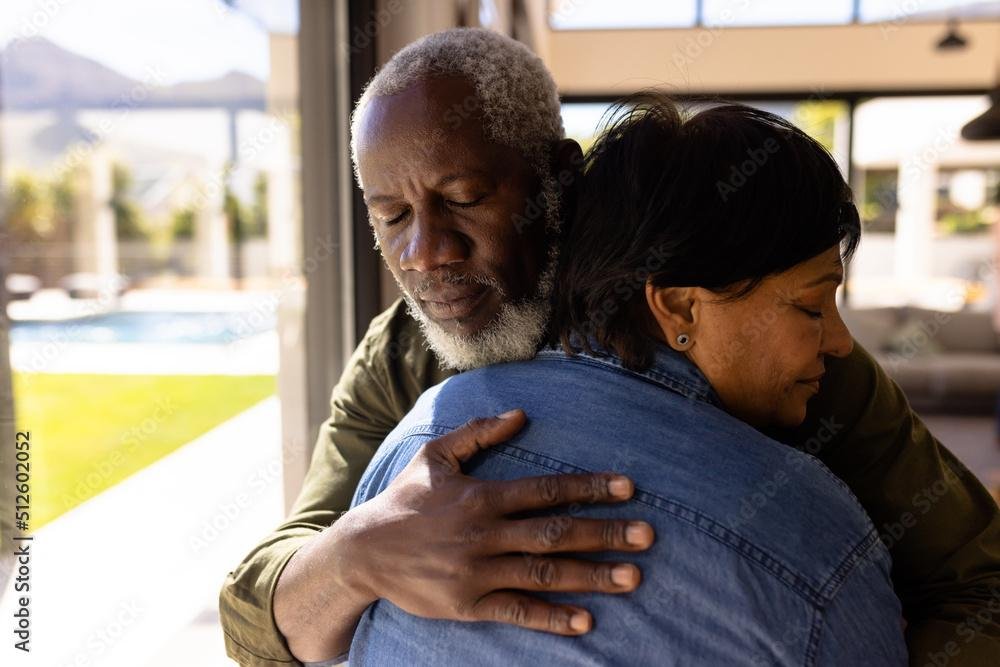Relationship
Social and economic implications of divorce
Social Implications
divorce has social consequences that extend beyond the couple to affect families, communities, and society. The failure of a marriage often leads to a ripple effect that transforms social relationships and societal dynamics (Amato, 2010).
a. Impact on family dynamics
Marital dissolution reshapes family roles and responsibilities, often resulting in conflicts among family members. Studies indicate that children often feel torn between parents, leading to strained parent-child relationships (Lansford, 2009). In Ghana, studies have shown that children in divorced families are more prone to behavioural issues, often feeling unsupported and confused (Abane, 2011). Additionally, research suggests that parental divorce can lead to long-term emotional instability in children—affecting their ability to form secure attachments and causing relational difficulties that may last well into adulthood (Fagan & Churchill, 2012).
b. Community disruption
When marriages break down, communities experience a weakening of social ties. People who are divorced and their children may feel alienated or stigmatised, and thereby become more withdrawn. In the USA, a report by the Institute for Family Studies (Wilcox et al. [2020]) reveals that community-level marriage dissolution correlates with lower community engagement and weaker social bonds. This can contribute to a reduction in collective cohesion, support networks, and social integration—affecting the quality of community life and overall societal well-being (Harkonen, 2014).
c. Children’s social development
Children of divorced parents commonly struggle with issues such as insecurity, trust, and difficulty building relationships. According to a study conducted in the UK, children belonging to divorcees are 33 per cent more likely to experience anxiety and social withdrawal than those in stable two-parent families (Office for National Statistics, 2021). Similarly, Nigerian studies show that children from divorced families mostly struggle with peer relationships, academic performance, and self-esteem (Olowodunoye & Ogungbamila, 2013). These social challenges can have lasting impacts, including increased risks of academic and occupational hurdles in adulthood.
Economic Implications
The economic costs of divorce are both immediate and long-term. They impact individuals and families, and on a larger scale, can influence the economic health of entire societies (Wagner & Weiss, 2006).
a. Financial strain
People’s financial stability can suffer greatly due to divorce. One or both spouses may struggle to cover basic expenses and maintain their pre-divorce lifestyle. Studies from the USA show that, on average, divorce can shrink household income by 15-40 per cent due to legal fees, asset division, and shifts in living arrangements (Amato, 2014). In Ghana, research suggests that divorced women, in particular, face financial hardship, with many relying on extended family support (Osei-Hwedie & Mwansa, 2007). Moreover, divorce in Nigeria substantially changes financial security, especially for women who lack legal protection for property or financial rights (Isiugo-Abanihe, 2005).
b. Impact on career and productivity
Marriage dissolution can alter work productivity and career growth. A study conducted by the United Kingdom’s Marriage Foundation (2019) revealed that individuals undergoing divorce tend to encounter a temporary drop in work performance, with a reported 20 per cent increase in sick days among recently divorced employees. Career disruption not only influences personal financial stability but can also minimise overall workforce efficiency, with consequences for national economic output (Vignoli et al., 2018).
c. Economic burden on society
The economic consequence of divorce extends beyond the individuals involved, placing a financial strain on public resources. A report from the Institute of Economic Affairs (2016) found that family breakdown costs the UK economy approximately £48 billion annually in welfare and support programmes, with similar patterns observed in the USA (Thomas & Sawhill, 2002). Divorce-related economic challenges normally require government intervention in the form of social welfare, housing assistance, and other public benefits, making family dysfunction an economic burden on society (Vignoli et al., 2018).
To be continued …
Source: Excerpts from ‘Preparing for a Happy and Fulfilling Marriage’ Book by REV. COUNSELOR PRINCE OFFEI (Psychotherapist, Lecturer, and Marriage Therapist). https:// counselorprinceass.wixsite.com/ edu-counseling-psych
https://princeoffei22.wixsite. com/website-psychologist
https://princeoffei22.wixsite. com/website
COUNSELOR PRINCE & ASSOCIATES CONSULT (CPAC COUNSELLOR TRAINING INSTITUTE)
Relationship
How to Navigate Social Media Boundaries as a Couple
Navigating social media boundaries as a couple can be tricky. With constant access to each other’s lives online, it’s essential to establish clear boundaries to maintain a healthy relationship. Here are practical tips to help couples manage social media use effectively.
1. Have an Open and Honest Conversation
The first step is to talk openly with your partner about social media usage and how it affects your relationship. Honest conversations may feel challenging, but they are essential for understanding each other’s perspectives and setting mutually acceptable boundaries.
2. Be Specific
When discussing boundaries, be clear about the behaviors that bother you and the limits you’d like to set. For example, instead of saying, “You spend too much time on social media,” try:
“I feel neglected when you are on your phone for extended periods during our conversations. Can we set a limit on phone usage during quality time together?”
3. Be Considerate
Consider and respect your partner’s viewpoint. Setting boundaries is not about controlling each other; it’s about creating balance and fostering trust in the relationship. The goal is to maintain connection without letting social media interfere with your bond.
4. Agree on Social Media Etiquette
Social media etiquette guidelines can help couples define what is and isn’t acceptable online behavior. Discuss whether you will follow each other, what kinds of photos you’ll post, and how you will interact with others online. Clear guidelines help prevent misunderstandings and maintain respect.
5. Respect Each Other’s Privacy
Respecting privacy is crucial. Avoid snooping on your partner’s accounts, sharing personal information without consent, or posting photos or updates that may make them uncomfortable. Trust and respect form the foundation of a healthy digital relationship.
6. Don’t Use Social Media as a Measure of Your Relationship
Remember that social media often shows a curated “highlight reel” of other people’s relationships. Avoid comparing your relationship to these selective portrayals. Every relationship is unique, with its own challenges and successes. Focus on what makes your bond special rather than online comparisons.
Conclusion
Setting boundaries on social media is key to nurturing a healthy, happy relationship. Open communication, mutual respect, agreed-upon etiquette, and avoiding comparison with others online are all vital steps in maintaining intimacy and trust in the digital age.
Source: Arkansas Relationship Counselling Centre
Relationship
Vulnerability, Openness Strengthen Relationship Bond

In the realm of romantic relationships, vulnerability and openness are often misconstrued as signs of weakness. However, research in psychology and relationship counselling suggests that embracing vulnerability can be a powerful catalyst for deepening emotional intimacy and strengthening bonds.
The Power of Vulnerability
Vulnerability involves sharing our innermost thoughts, feelings, and desires with our partner, making us susceptible to potential hurt or rejection. Yet, it is precisely this openness that allows us to build trust, foster empathy, and create a sense of safety in our relationships.
When couples prioritise vulnerability, they often experience a profound shift in their relationship dynamics. For instance, a couple I counselled, who were struggling to connect after a recent move, found that sharing their fears and anxieties with each other helped them rebuild their emotional intimacy. By being open about their struggles, they were able to support each other and strengthen their bond.
Benefits of Vulnerability and Openness
- Deeper understanding: By sharing our thoughts and feelings, we gain a deeper understanding of ourselves and our partner.
- Increased empathy: When we are open about our struggles, our partner is more likely to respond with compassion and support.
- Resilience: Vulnerability helps us develop coping mechanisms and learn to navigate challenges together.
- Authentic connection: By being our authentic selves, we create a sense of mutual understanding and connection.
Cultivating Vulnerability in Relationships
So, how can we cultivate vulnerability in our relationships? Here are some practical tips:
- Start small: Begin by sharing your thoughts and feelings in low-stakes situations, like discussing a book or movie. As you become more comfortable, you can gradually share more personal aspects of yourself.
- Practice active listening: When your partner shares their vulnerabilities, respond with empathy and understanding. This helps create a safe space for open communication.
- Be present: Focus on the present moment and try to let go of distractions. This allows you to stay engaged and responsive to your partner’s needs.
- Show appreciation: Express gratitude for your partner’s vulnerability and celebrate their courage in sharing their thoughts and feelings.
In many successful relationships, couples have reported that regular “check-ins” or meaningful conversations help them stay connected and build a stronger bond. By prioritising vulnerability and openness, these couples are able to address life’s challenges together, fostering a deeper sense of connection and intimacy.
Vulnerability and openness are essential components of a healthy, fulfilling relationship. By embracing these qualities, we can build stronger, more resilient bonds with our partners. As we navigate the complexities of relationships, let us remember that vulnerability is not a weakness, but a strength that can bring us closer to ourselves and our loved ones.
To be continued…
Source: Excerpts from “COURTSHIP MATTERS: Keys to a Fulfilling Lasting Marriage” by Rev. Counselor Prince Offei (Lecturer, Published Author, Mental Health Professional, and Marriage Counsellor).
Order the book now:
ORDER BOOK NOW:
https://princeoffei22.wixsite.com/
author https://princeoffei22.wixsite.com/website
COUNSELOR PRINCE & ASSOCIATES
CONSULT (CPAC COUNSELLOR TRAINING
INSTITUTE)

 Profile6 days ago
Profile6 days agoAlbert Litela Obidiaba: The artist who wove Ghana’s soul into the King’s Baton

 News6 days ago
News6 days agoDaddy Lumba’s wife, children run to court to injunct December 6 funeral arrangements

 News1 week ago
News1 week agoPresident Mahama to meet Auditor-General, Chief Justice and Attorney-General over misuse of public funds






